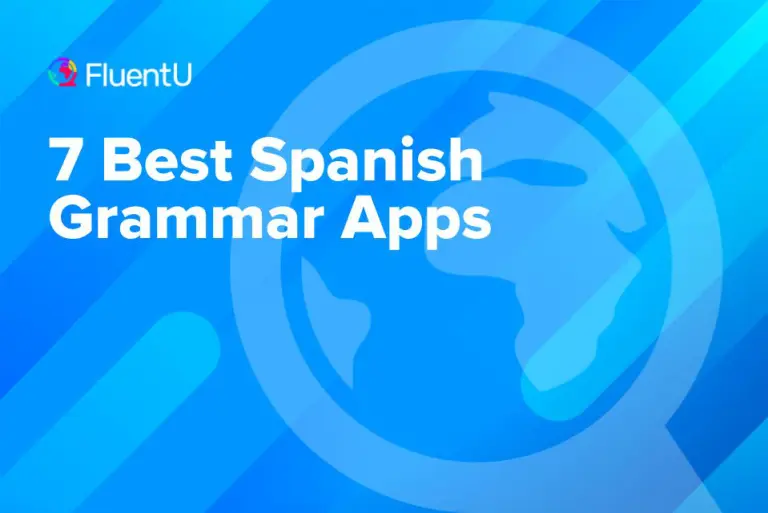Best Spanish Learning App – Master Spanish the Smart Way
If you’ve ever dreamed of sipping sangria on the streets of Barcelona or charming locals in Mexico City with fluent Spanish, there’s no better time to start learning. And guess what? You don’t need to enroll in a language school or fly to Spain to make it happen. Thanks to modern technology, you can learn Spanish from your couch with just your phone. But with so many options out there, how do you know which is the best Spanish learning app?
In this guide, we’re diving deep into the world of Spanish learning apps. Whether you’re a complete beginner, brushing up after high school classes, or aiming to speak like a native, there’s an app tailored for you. From gamified experiences to structured lessons and real-life conversation practice, we’ll explore which apps are actually worth your time—and which might leave you frustrated.
Let’s unlock your language-learning potential and find the perfect app that matches your style, pace, and goals.
Introduction to Learning Spanish Digitally
Why Learn Spanish in Today’s World?
Spanish isn’t just a beautiful language; it’s one of the most widely spoken languages in the world. With over 500 million native speakers across 20+ countries, it opens doors to rich cultures, business opportunities, and unforgettable travel experiences. Whether you’re networking globally, planning a South American adventure, or simply challenging yourself, Spanish is an incredible skill to acquire.
But here’s the kicker—traditional language learning methods can be slow, expensive, and often boring. That’s why millions are turning to mobile apps to learn Spanish on their own schedule.
Learning Spanish digitally is flexible, affordable, and often more engaging. Apps can provide everything from grammar drills and vocabulary flashcards to speech recognition and interactive conversations. No dusty textbooks. No intimidating classrooms. Just you, your phone, and a personalized Spanish adventure.
The Rise of Language Learning Apps
In the last decade, we’ve seen an explosion of apps promising to teach languages fast and fun. Platforms like Duolingo, Babbel, Rosetta Stone, and Memrise are now household names. The pandemic further pushed digital learning into the spotlight, and language apps rode the wave.
Why the surge in popularity?
-
Convenience: Learn anytime, anywhere.
-
Gamification: Turn learning into a fun, addictive game.
-
Personalization: Apps now adapt to your level and pace.
-
Affordability: Most apps offer free versions or cost way less than classes.
It’s a revolution in language learning—and if you choose the right app, it can actually work.
What Makes a Spanish Learning App the Best?
Key Features to Look For
With so many apps promising to teach you Spanish, how do you separate the gems from the gimmicks? Here’s a breakdown of must-have features that define the best Spanish learning app:
-
Interactive Lessons: Look for bite-sized, engaging lessons that go beyond boring text.
-
Speech Recognition: Crucial for improving your pronunciation.
-
Grammar Explanations: A good app teaches you the “why” behind sentence structures.
-
Cultural Context: Language without culture is like salsa without spice.
-
Progress Tracking: It should show you how far you’ve come and where you need to improve.
-
Offline Access: Not every moment has Wi-Fi—offline lessons are a big plus.
Apps that combine these features create a well-rounded, immersive learning experience. But don’t stop there. Make sure the app matches your learning style, whether it’s visual, auditory, or kinesthetic.
User Experience and Engagement
An app can have the best lessons in the world, but if the design is clunky or boring, you’re not going to stick with it. Great user experience means:
-
Intuitive Interface: Easy to navigate, even for beginners.
-
Motivational Tools: Badges, streaks, and progress charts that keep you coming back.
-
Community Features: Forums or chat tools where you can connect with fellow learners or native speakers.
Engagement is key. If an app feels more like a chore than a challenge, you’ll probably drop it faster than a hot churro.
Cost-Effectiveness
Let’s talk money. Many of the best Spanish learning apps offer a freemium model—free to start, with optional upgrades. But are those upgrades worth it?
It depends on your goals. For casual learners, a free plan might be enough. But if you’re serious about fluency, consider investing in a premium version. They usually unlock:
-
Advanced lessons
-
Native speaker audio
-
Personalized feedback
-
More practice opportunities
Here’s a general idea of pricing for popular apps:
| App Name | Free Version | Premium Cost (Monthly) |
|---|---|---|
| Duolingo | Yes | $6.99 |
| Babbel | Limited | $13.95 |
| Rosetta Stone | No | $11.99 |
| Memrise | Yes | $8.99 |
| Busuu | Limited | $6.99 |
Choose an app that offers value at your price point—but remember, investing in your brain is always worth it.
Top 5 Best Spanish Learning Apps in 2025
Let’s get to the good stuff. Here are the top contenders for the best Spanish learning app in 2025—each with its own strengths, quirks, and fan base.
Duolingo – Gamified Language Learning Fun
Duolingo is the reigning king of language apps, and for good reason. With its iconic green owl and bite-sized lessons, it turns language learning into a game. Each lesson feels like a level in a mobile game—you earn XP, unlock achievements, and compete on leaderboards.
Why it rocks:
-
Completely free (with ads)
-
Covers reading, writing, listening, and speaking
-
Fun and addictive design
-
Streaks and hearts make it competitive
Where it falls short:
-
Lacks in-depth grammar explanations
-
Limited real-life conversation practice
Duolingo is ideal for beginners or casual learners who want to dip their toes into Spanish without spending a dime. Think of it as the appetizer in your language buffet—great to start, but you’ll eventually want more.
Babbel – Structured Lessons by Language Experts
If you’re looking for a more serious and structured approach, Babbel might be your perfect match. Designed by a team of linguists and language educators, Babbel offers lessons that mirror the structure of a traditional language course—but with the flexibility and accessibility of an app.
Why Babbel Stands Out:
-
Lessons are designed for real-world conversation
-
Includes grammar tips and cultural insights
-
Focused on correct sentence building and usage
-
Speech recognition to improve pronunciation
What’s Inside: Babbel’s courses are split by topics like “Travel,” “Work,” or “Culture,” and also by proficiency levels, from A1 to C1. Each lesson builds on the last, reinforcing what you’ve learned while gradually increasing difficulty.
Who It’s Best For: Intermediate learners, professionals, and those who prefer structured progression will love Babbel. It’s also one of the few apps that focuses on grammar and context, not just vocabulary memorization.
Drawbacks? While it’s not free (except for a basic trial), the quality of lessons justifies the price. And while it’s less flashy than Duolingo, it’s more educationally robust.
Rosetta Stone – Immersive and Time-Tested
Rosetta Stone has been around since the ’90s and was once the gold standard for language learning software. Today, it’s still a top contender in the app space, especially if you’re a fan of immersive learning.
What Makes Rosetta Stone Unique:
-
Total immersion method (no translations—think in Spanish from Day 1)
-
Great for developing intuitive language use
-
Speech recognition software for accent training
-
In-depth pronunciation feedback
Instead of giving you direct translations, Rosetta Stone pairs words with images, forcing your brain to associate new vocabulary in-context—just like how a child learns a first language.
Ideal For: Visual learners and people who want a true immersion experience. It’s especially effective for pronunciation and understanding Spanish in real-life settings.
Cons? It’s more expensive than other apps and lacks community features. It’s not ideal if you need grammar breakdowns or quick translations.
Memrise – Real-Life Vocabulary from Native Speakers
Memrise takes a unique and practical approach to language learning. It focuses on vocabulary you’ll actually use in daily conversations, and it features native speakers so you hear authentic pronunciation from the start.
Key Features:
-
Videos of real people using real-life phrases
-
Uses spaced repetition to cement vocabulary
-
Games and quizzes to reinforce learning
-
Quick lessons perfect for on-the-go learning
What sets Memrise apart is the focus on spoken Spanish as it’s used by native speakers—slang, accents, and all. It’s less academic, more street-smart.
Perfect For: Travelers, conversational learners, and anyone who wants to sound natural rather than textbook-perfect.
Downside? It’s not as grammar-focused as Babbel or as comprehensive as Rosetta Stone. But if your goal is quick, conversational Spanish, this is a winner.
Busuu – Personalized Feedback and Social Learning
Busuu blends tech with community, offering personalized feedback from native speakers. It’s a fantastic choice if you like the idea of social learning and want to practice with real people.
Why It’s Great:
-
Real conversations with native Spanish speakers
-
Feedback on writing and speaking exercises
-
Personalized study plans based on your goals
-
Grammar lessons and vocabulary builder
Busuu also has a placement test that helps you skip ahead if you’re not a beginner. Lessons are aligned with the CEFR (Common European Framework of Reference for Languages), which is helpful for serious learners.
Ideal User: Learners who want interaction, goal tracking, and accountability. Great for those aiming for real-world fluency and who appreciate feedback.
Watch Out For: While Busuu has a free version, the most useful features—like feedback and offline access—are locked behind a subscription.
Detailed Comparison Table of the Top Apps
Let’s break it down into a side-by-side comparison so you can decide which app suits your needs best.
| Feature / App | Duolingo | Babbel | Rosetta Stone | Memrise | Busuu |
|---|---|---|---|---|---|
| Free Version | Yes | Limited | No | Yes | Limited |
| Price (Monthly) | $6.99 | $13.95 | $11.99 | $8.99 | $6.99 |
| Grammar Focus | Basic | Strong | Minimal | Minimal | Strong |
| Speech Recognition | Yes | Yes | Advanced | No | Yes |
| Real Voices | Some | Yes | Yes | Extensive | Yes |
| Ideal For | Beginners | Structured Learners | Immersion Fans | Conversationalists | Social Learners |
| Offline Mode | Yes (Plus only) | Yes | Yes | Yes | Yes (Premium) |
Each of these apps excels in different areas. Duolingo is fun and free. Babbel is structured and educational. Rosetta Stone offers immersive learning. Memrise is casual and real-world. Busuu brings people into the process with feedback and real-time correction.
Choosing the Right App Based on Your Goals
Casual Learners vs. Serious Students
Not everyone learns for the same reasons. Some people just want to pick up basic phrases for a vacation. Others are diving deep for business, relocation, or personal enrichment.
-
Casual Learners: Duolingo and Memrise are ideal—short, fun lessons that don’t overwhelm.
-
Serious Students: Babbel, Rosetta Stone, and Busuu offer more structure and depth for long-term growth.
Learning for Travel vs. Professional Use
Your purpose influences which app works best for you.
-
Travel: You’ll need quick, conversational vocabulary. Memrise and Duolingo focus on phrases you can use at airports, hotels, and restaurants.
-
Work/Business: Babbel and Busuu are more professional. They include business vocab and grammar that helps you communicate clearly and confidently.
Apps for Kids, Teens, and Adults
Not all apps cater to every age group. Here’s a quick guide:
-
Kids: Duolingo and Memrise (especially with parental guidance)
-
Teens: All five, though Duolingo and Babbel are most teen-friendly
-
Adults: Babbel, Rosetta Stone, and Busuu are designed with adult learners in mind
Tailoring your app choice based on age and motivation helps you stick with it—and actually see results.




